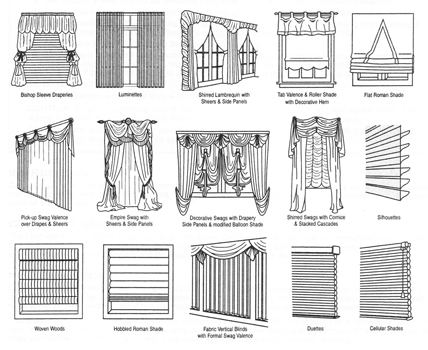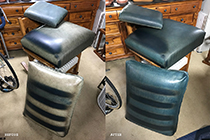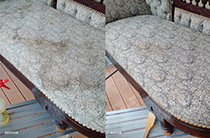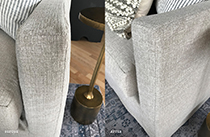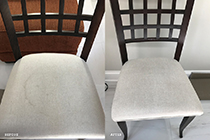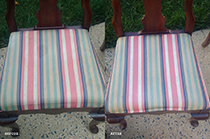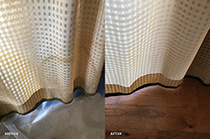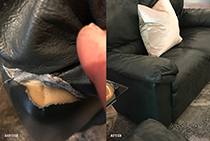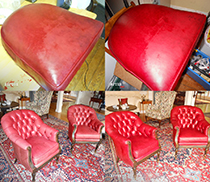Knowledge
Our Thoughts on Re-using N95 and Home-made Masks During the Coronavirus Pandemic
At Bedminster ON-SITE Draperycare, we have been removing difficult stains and odors from fine fabrics for years. You probably will not find the following advice anywhere else.
N95 masks are designed to be used once (for no longer than three hours) and then thrown out. This is not because the mask won’t continue to filter but because a used mask develops harmful pathogens on the inside of the mask, which can be breathed in and cause cross contamination and illness. Therefore, masks, which were originally designed to be thrown out after use, should be decontaminated after use if they are going to be used again.
The problem is that cleaning a mask with soap and water will ruin a mask. Once a soaked mask dries, it cannot be breathed though and the wearer will instead be breathing air from the sides of the mask, defeating the purpose of the mask.
The solution is to disinfect just the inside surface of the mask, not the whole mask using hydrogen peroxide. Hydrogen Peroxide, through the process of oxidation, kills coronavirus, mold, and a host of pathogens. Hydrogen peroxide is safe, quickly breaks down into water and dries.
The key is not to get the mask soaked through but to lightly spray a small amount of hydrogen peroxide just on the inside of the mask. Once the hydrogen peroxide is sprayed on the inside of the mask, it is best to set the mask out in direct sunlight with the inside of the mask facing the sun. Sunlight acts as a disinfectant by itself and also will activate the hydrogen peroxide helping the hydrogen peroxide to do its job.
When making a filter out of vacuum bag material, it would be best to use HEPA vacuum bags, which is similar in filtering ability to N95 masks. If using non HEPA vacuum bag material, I would double or triple the thickness.
This advice is not based on any testing or studies but simply on our experience over the years.
Do you have these shades?
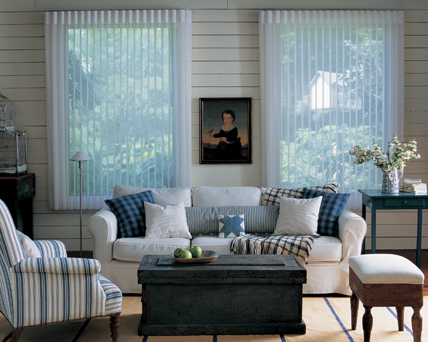
Hunter Douglas type shear shades are as delicate as they are beautiful. The above shades are Hunter Douglas Luminettes, which are particularly sensitive to improper cleaning procedures as well as poor installation. These shades can be easily damaged when cleaned incorrectly. Even vacuuming the wrong way can create puckers and creases, which cannot be undone later by professional cleaning. Let our Certified Fabricare Specialist inspect your shades to provide an honest assessment of their condition prior to cleaning.
A word about Indoor air quality
The Environmental Protection Agency estimates that the air inside your home is 2-5 times more polluted than the air outside. Acids, dust mites, fungi, mold, pet dander, pollens, soot and tobacco reduce your indoor air quality and build up on your home fabrics. Poor air quality can lead to emphysema, asthma and severe allergies. Regular professional cleaning of your home fabrics will help you keep a healthy home.
SOOT
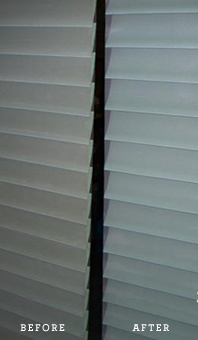 Soot is the product of incomplete combustion of carbon-containing fuels. A blue flame indicates complete combustion, however, a yellow flame, whether from a candle, a defective heating system, a fireplace, or a stove, indicates incomplete combustion or soot production. Because soot particles average less than one micron, your air conditioning system cannot filter soot. The less than one micron size also allows the soot particles to penetrate your lower respiratory tract. Once the soot settles on your fabrics, it is no longer a health hazard but can turn your window treatments gray very quickly.
Soot is the product of incomplete combustion of carbon-containing fuels. A blue flame indicates complete combustion, however, a yellow flame, whether from a candle, a defective heating system, a fireplace, or a stove, indicates incomplete combustion or soot production. Because soot particles average less than one micron, your air conditioning system cannot filter soot. The less than one micron size also allows the soot particles to penetrate your lower respiratory tract. Once the soot settles on your fabrics, it is no longer a health hazard but can turn your window treatments gray very quickly.
Some preventative measures you can take are as follows:
- • Burn only low soot producing candles.
- • Keep candles out of drafts. A flickering candle can produce as much soot as 50 even burning candles!
- • Assure the flew is open in the fireplace.
- • Have your heating system checked and maintained.
DUST MITES
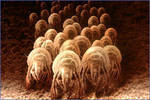
House dust mites live in mattresses and cause all manner of allergic reactions in adults and children. The dust in your house is mainly composed of shedded skin and fecal matter from dust mites. This dust collects on your bedding, upholstery and window treatments. One call to us and we can eradicate those pesky little dust mites from your mattresses.
Besides having your mattresses, window treatments and upholstery cleaned professionally and regularly, there are several other precautions the homeowner can take to keep house dust mite population to a minimum, especially when there are young children present.
-
- Bedding: Bedding should be changed at least weekly.
- Blankets: Synthetics may be slightly less attractive to dust mites than wool.
- Comforters: Try to use blankets instead of comforters. Comforters seem to provide an attractive environment for house dust mites. If you must use a comforter, be sure to wash it often in hot water if possible (check manufacturers directions).
- Fabric Toys: Either clean them in the washing machine in very hot water or put them in the freezer overnight. Adding a half cup of white vinegar to the rinse cycle kills germs and seems to get any remaining soap out of clothing. This is especially important for people with sensitive skin.
- Furniture: House dust mites, to a lesser extent, can also be found in furniture. To keep dust mites to a minimum, try not to make your husband sleep on the couch. If unavoidable, please provide a sleeping pillow rather than using the couch pillows as headrests.
- Moisture: Dust mites are attracted to moisture so dehumidifiers and air conditioning in the summer helps. Conversely, using a room moisturizer would be counter productive.
- Pillows: Dust mites love pillows the most. We recommend you discard and replace your pillows every other year. Down pillows are no worse than regular pillows. However, memory foam pillows seem to repel dust mites and, therefore, are the best alternative. Zippered pillow protectors with a tight weave will help to keep down the dust mite population.

- Pets: If your child suffers from breathing problems, keep pets either downstairs or outdoors or find them a new home.
- Vacuuming: Using a vacuum with a HEPA filter may be better than a vacuum without a HEPA filter. Nilfisk has received top ratings and Miele is very good too. Vacuum the bedrooms every few days and be sure to vacuum under the bed. Keep your child out of the bedroom for at least one hour after vacuuming.
additional resources
- • How dust mites can affect you or your child’s performance
- • Mite Solutions : Don’t sleep with the Dust Mite anymore
- • Attack of the Dust Mites II
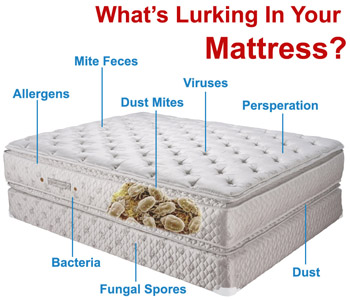
Window Coverings
If you are calling to discuss your custom made draperies, the following picture may help with the description:
Stage Draperies
If you are calling to discuss stage drapery cleaning, the following picture will help with the description:

- Main Stage Curtain
- Main Valance
- Border
- Legs
- Rear Curtains
- Backdrop
Spotting
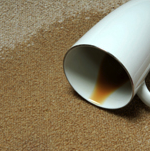 There are many types of stains, which require different methods to remove. Much depends on PH balance as well as how old the stain is. We use professional chemicals to remove stains and will do our best to remove them. However, some stains are impossible to remove and we cannot always get them out. It is always better to leave the spot rather than to cause any noticeable damage.
There are many types of stains, which require different methods to remove. Much depends on PH balance as well as how old the stain is. We use professional chemicals to remove stains and will do our best to remove them. However, some stains are impossible to remove and we cannot always get them out. It is always better to leave the spot rather than to cause any noticeable damage.
“The spot belongs to the customer, the damage belongs to us.”
| -old Chinese proverb |













